Geotechnical Engineering II: Footing Design and Settlement Analysis
VerifiedAdded on 2022/08/12
|9
|524
|141
Practical Assignment
AI Summary
This assignment focuses on the design of isolated footings for a commercial building in Dubai, considering the soil properties of stiff clay. The solution begins with determining appropriate footing sizes for three columns (C1, C2, and C3) based on given column loads and soil strength at 3m depth, using the formula A=F/P. It then calculates both short-term and long-term settlement for the largest footing, considering the saturated unit weight and void ratio, and evaluates whether the settlement exceeds allowable limits. Furthermore, the assignment addresses footing design with a higher soil strength, recalculating footing sizes using a safety factor of 2 and calculating settlement for both the largest and smallest footings. The solution includes professional engineering drawings for the largest footing, providing plan and cross-section views, and a plan showing the overall footing layout. Finally, the assignment checks the adequacy of the smallest footing (C1) to withstand a horizontal load, analyzing the moments generated and the soil's ability to resist the load. References from Bo (2019) and geotechnicaldirectory.com are included.
1 out of 9
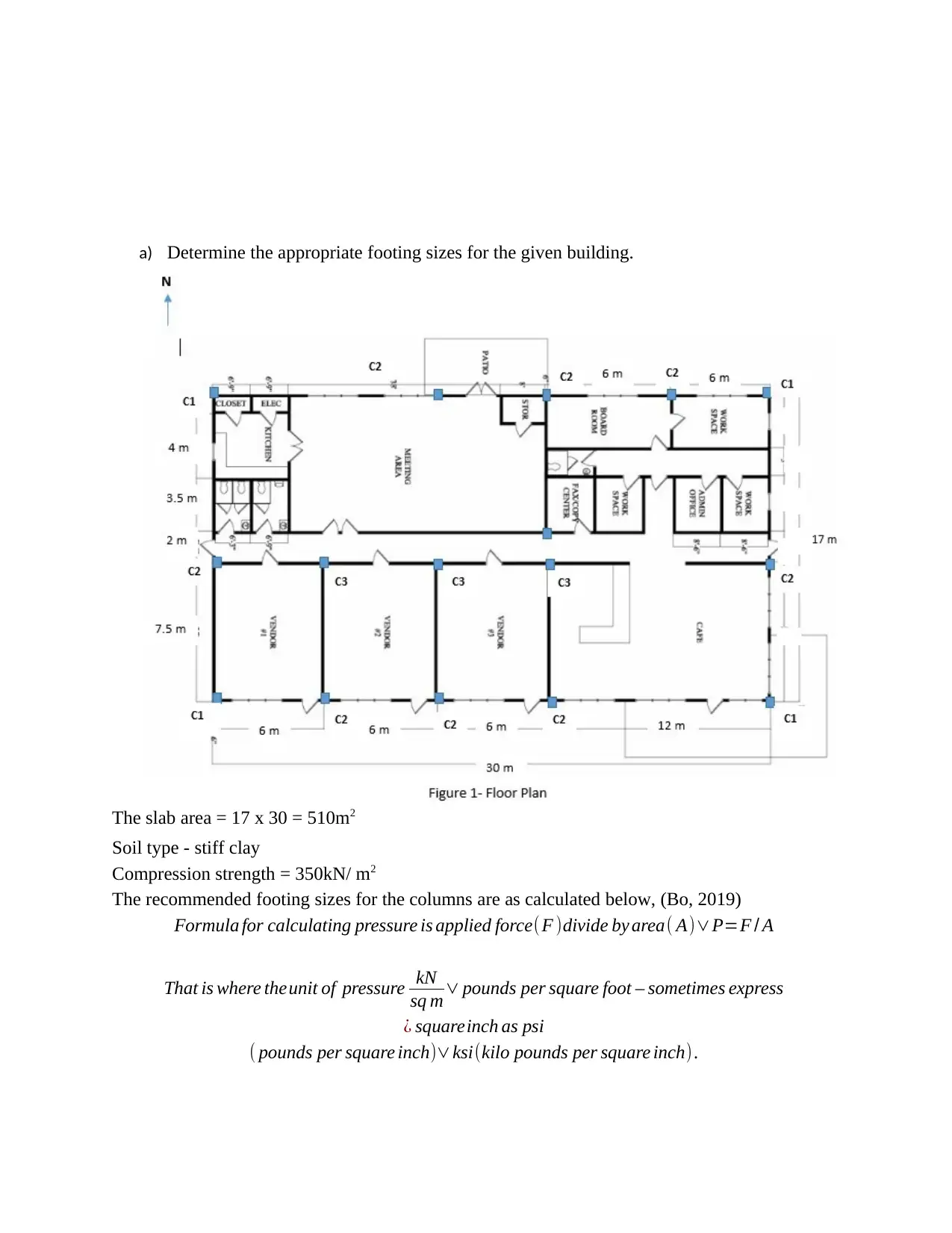
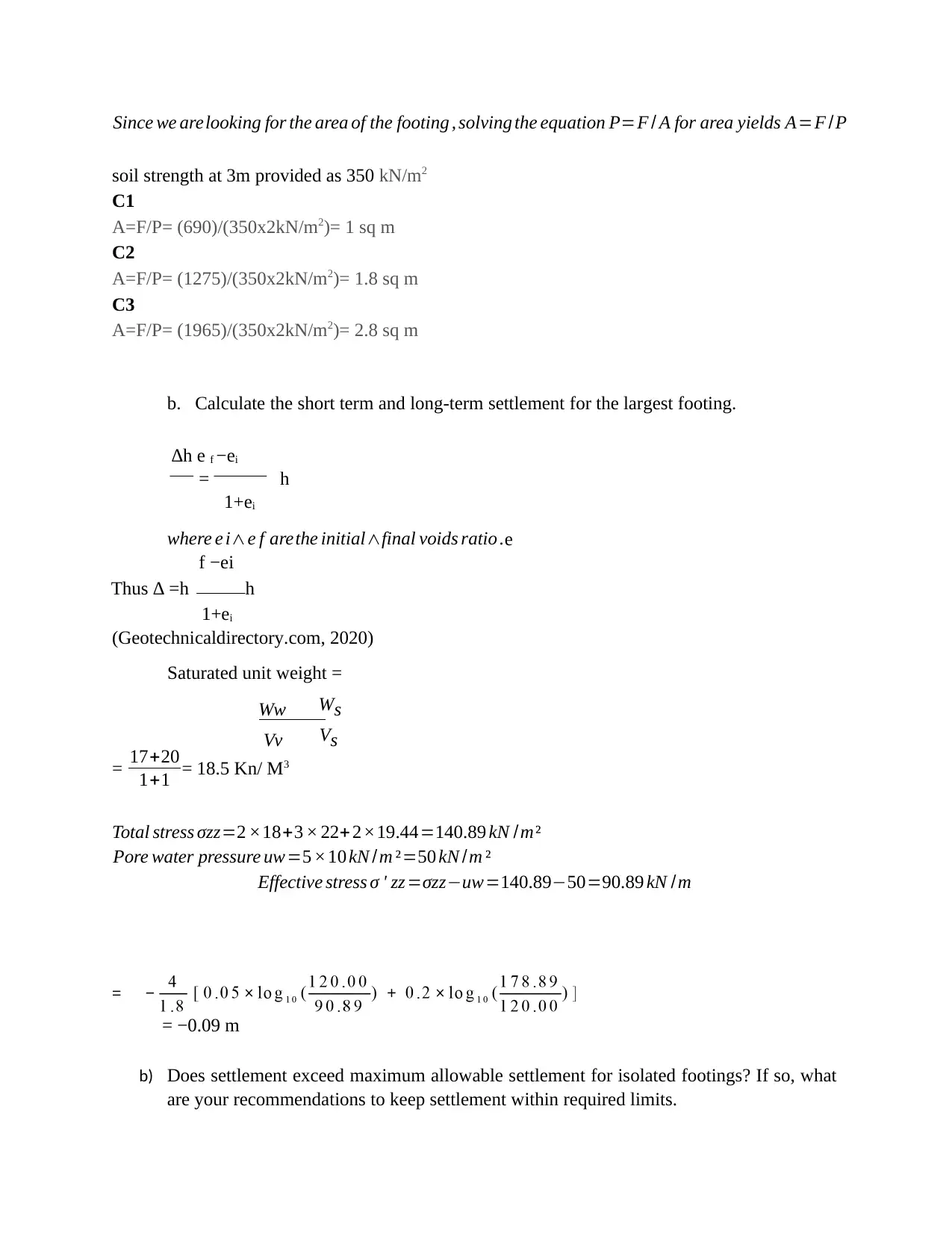


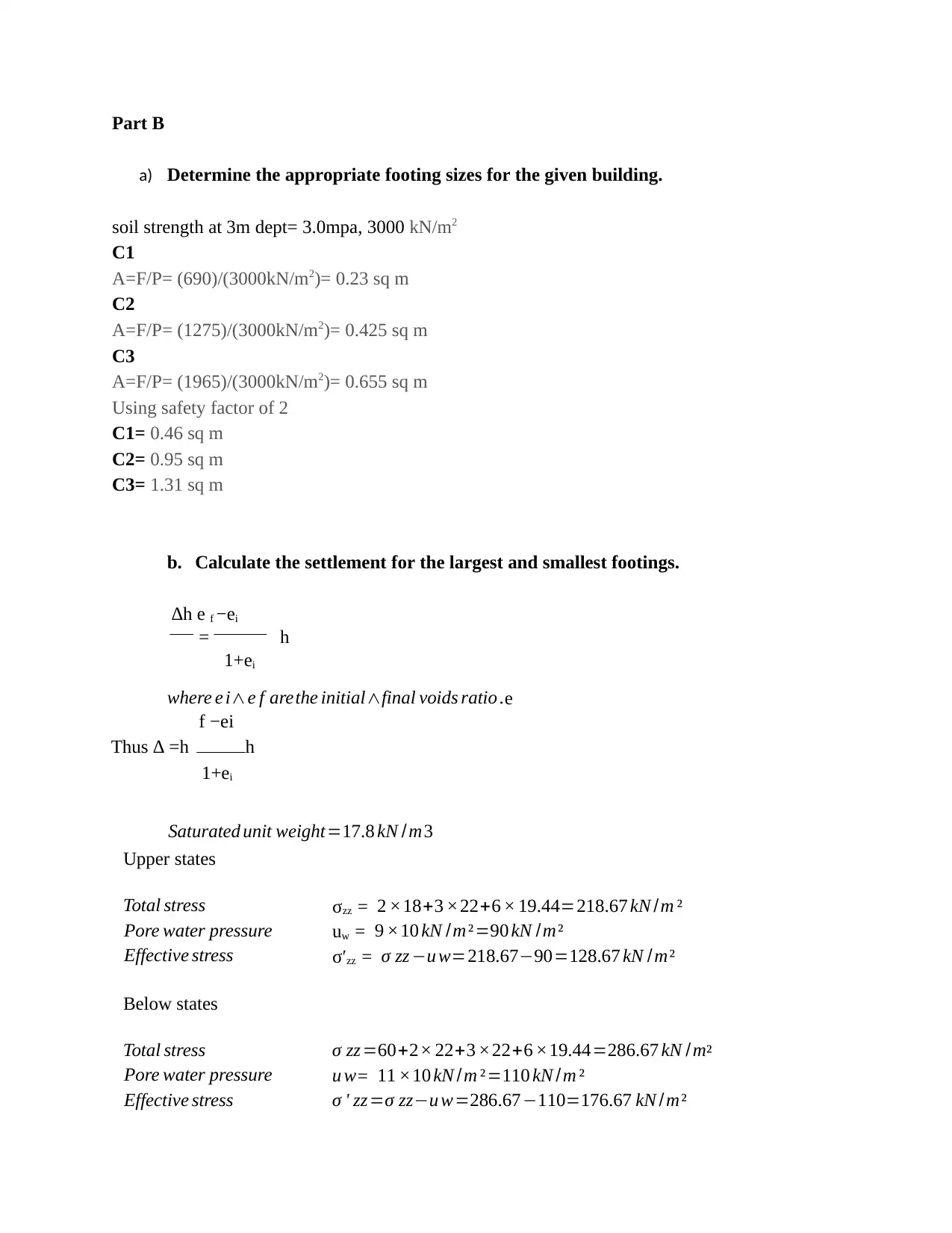
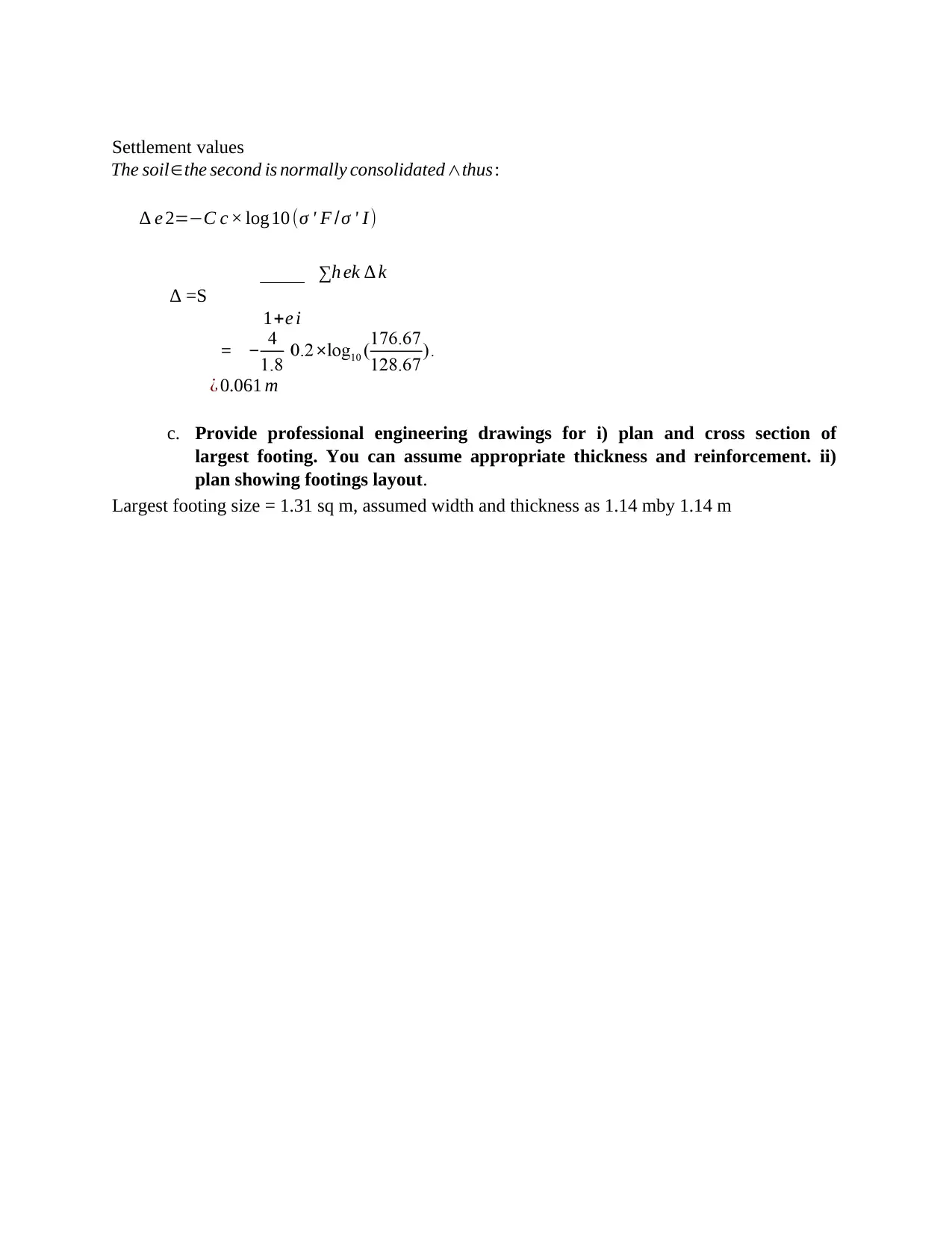
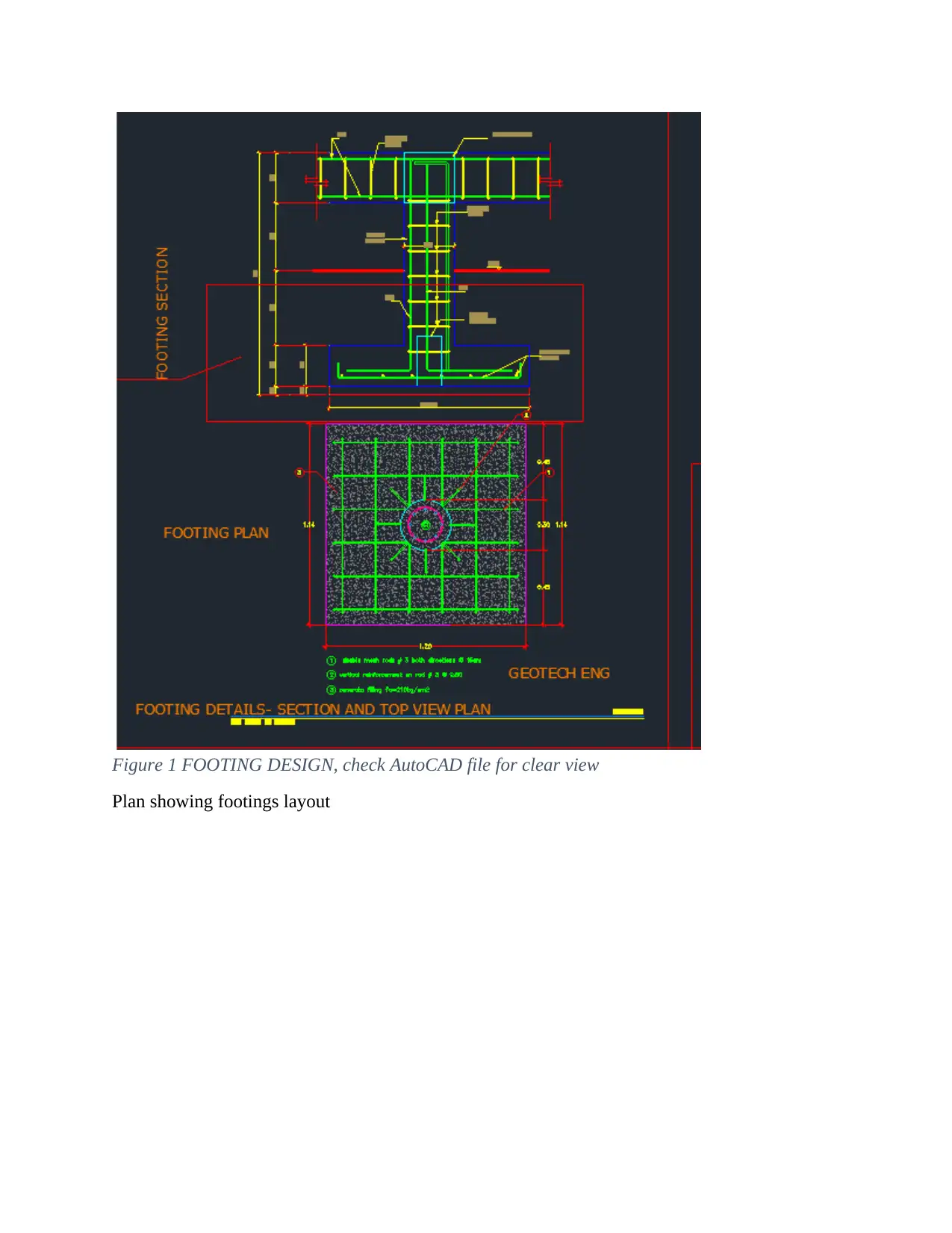
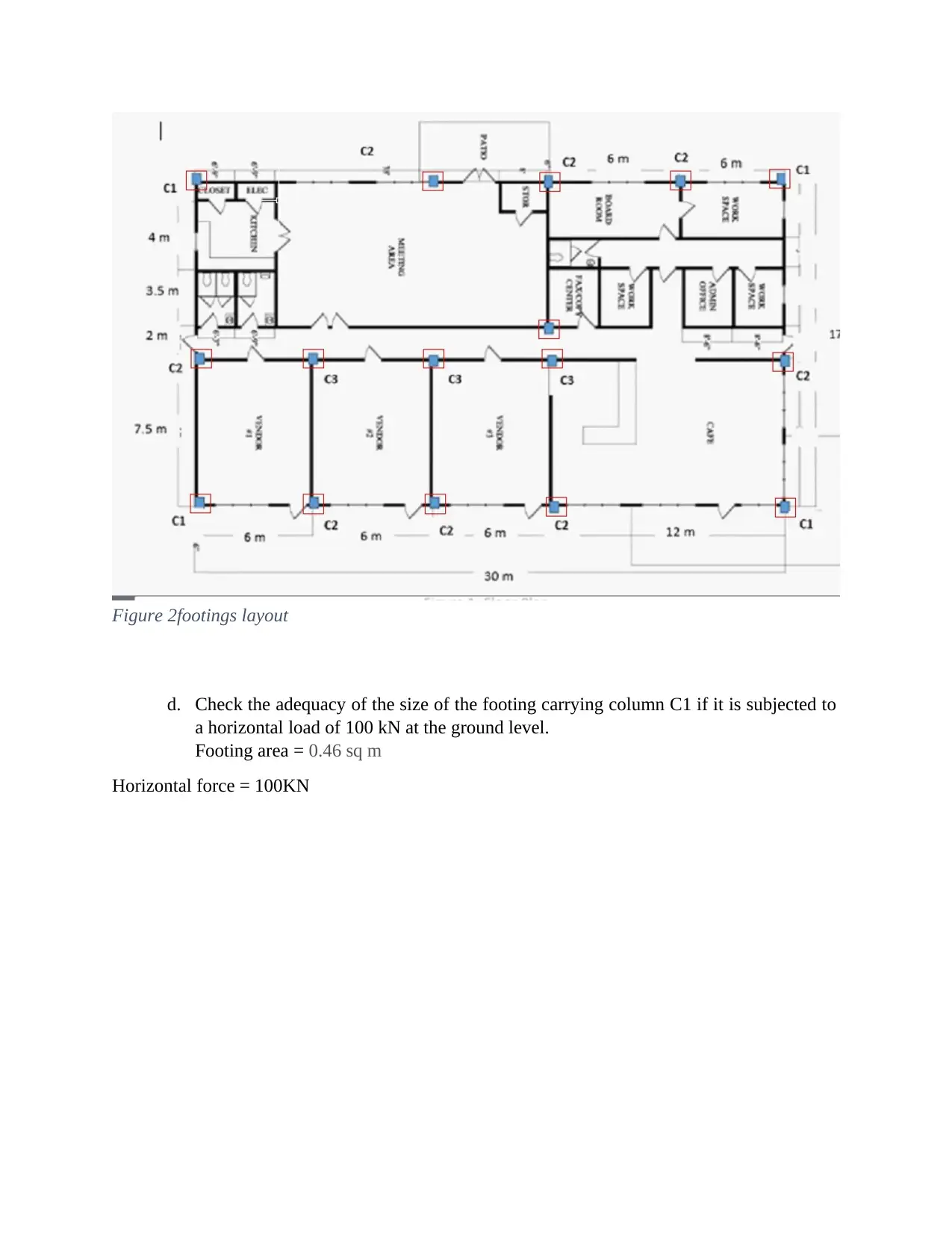
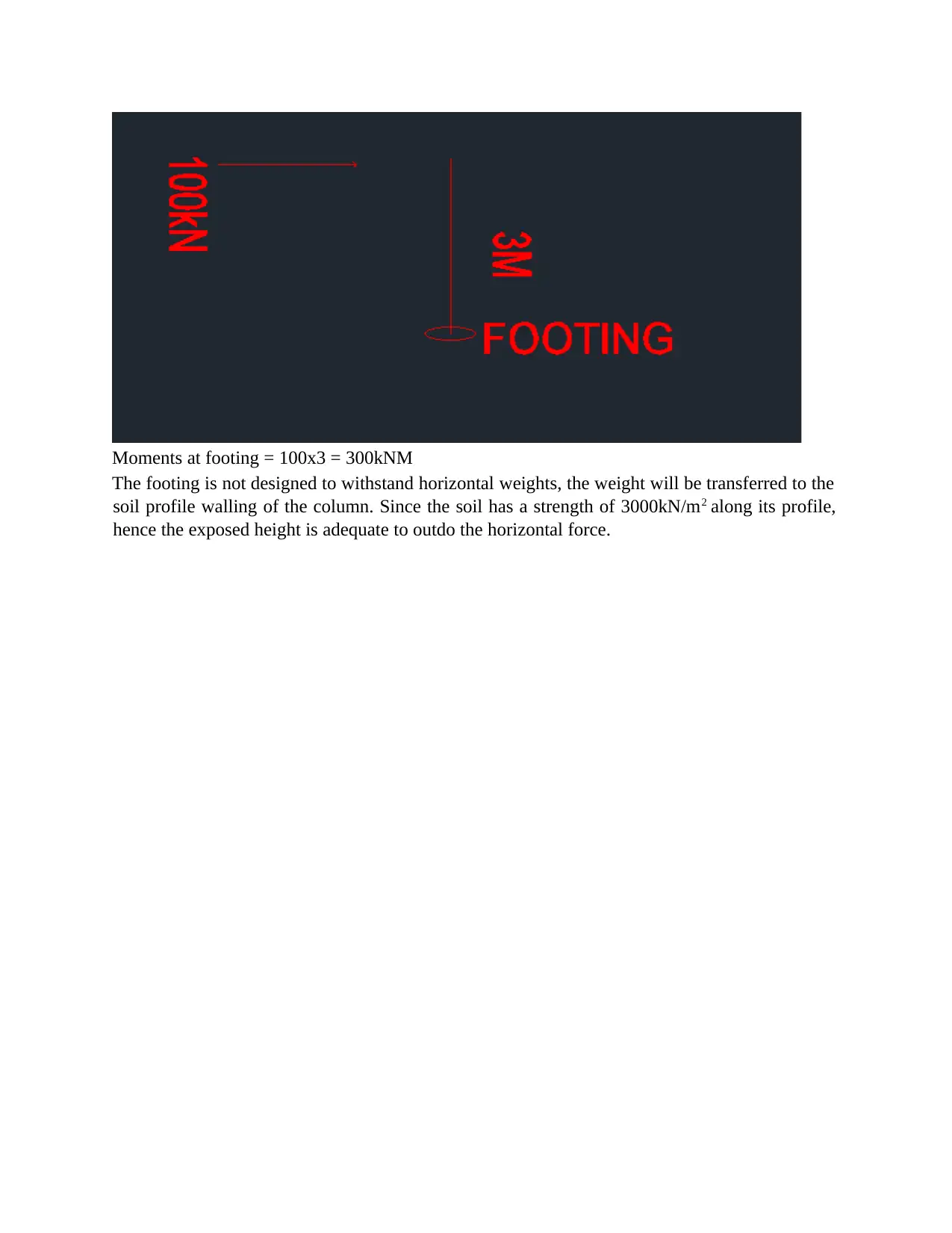
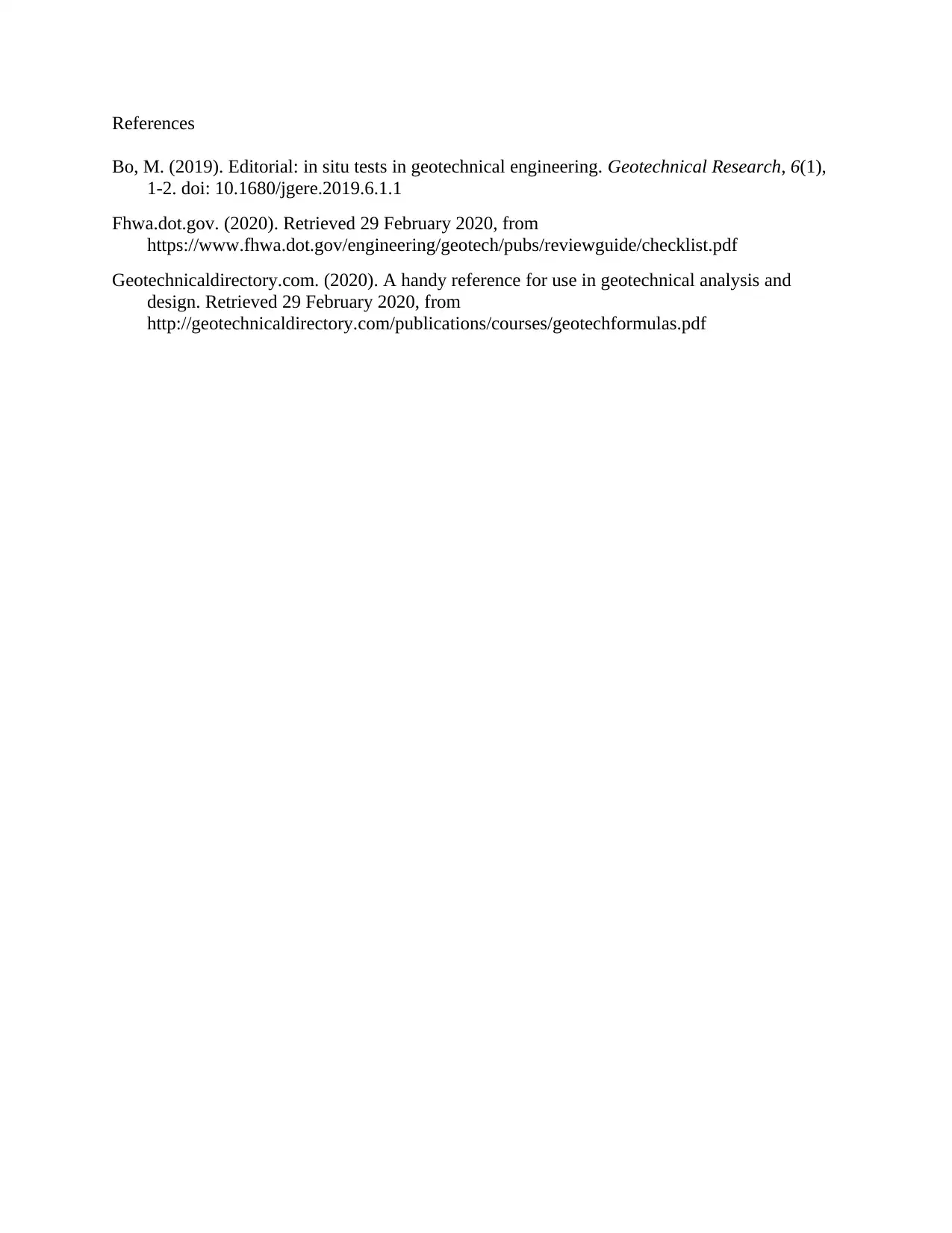
![[object Object]](/_next/static/media/star-bottom.7253800d.svg)